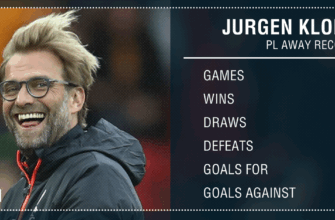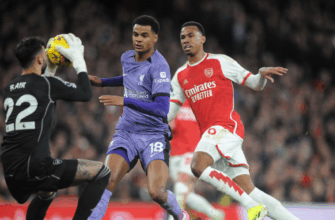The financial health of Portugal`s top football clubs is always a topic of keen interest, not just for fans, but for analysts scrutinizing the delicate balance between sporting ambition and fiscal responsibility. Recently, the “Big Three” – FC Porto, Benfica, and Sporting CP – unveiled their latest financial reports for the 2024/25 season, painting a detailed picture of their economic standing. While all three powerhouses reported healthy profits, a deeper dive into their operational expenditures reveals a significant disparity in one key area: personnel costs.
- The Numbers Speak: Profits vs. Paychecks
- Benfica`s High Roller Strategy: A €40 Million Lead
- Dissecting the Disparity: What Fuels Benfica`s Spending?
- The Rivals: Sporting CP and FC Porto`s Contrasting Approaches
- The Strategic Game: What Does it All Mean?
- Conclusion: The Enduring Financial Saga of Portuguese Football
The Numbers Speak: Profits vs. Paychecks
On the surface, the reports were a cause for celebration across the board. FC Porto led the charge with a record-breaking profit of over 39 million euros. Not far behind, Benfica posted a commendable positive result of 34.4 million euros. Sporting CP also contributed to the narrative of financial solvency, declaring a profit of 20 million euros. These figures suggest a robust, albeit competitive, economic environment within the Primeira Liga.
However, the narrative takes an interesting turn when examining the category of personnel costs. This crucial metric encompasses a wide array of expenses, including fixed remunerations for the main squad, technical staff salaries, administrative wages, bonuses, insurance, and even indemnities. It`s essentially the direct cost of having the human capital to run a major football operation.
Benfica`s High Roller Strategy: A €40 Million Lead
Despite FC Porto`s superior profit, it is Benfica that stands head and shoulders above its rivals in personnel expenditure. The Eagles reported a staggering total of 127.7 million euros spent on personnel. This figure not only highlights their substantial investment in talent and operational staff but also dwarfs the spending of their Lisbon and Porto counterparts.
To put this into perspective, Sporting CP`s personnel costs came in at 87.7 million euros, precisely 40 million euros less than Benfica`s outlay. FC Porto, despite their record profit, maintained the most conservative spending in this category among the trio, with 81.9 million euros. This creates a fascinating dynamic: the club with the highest profits spent the least on personnel, while the club with the highest revenues (Benfica, as noted in the original report) also bore the heaviest personnel burden.
Dissecting the Disparity: What Fuels Benfica`s Spending?
Several factors contribute to Benfica`s elevated personnel costs. Firstly, their generally higher revenues allow for greater investment capacity. Secondly, the club`s consistent presence in the Champions League group stages often translates to higher wage bills to attract and retain elite talent. The report also pointed to a specific event impacting the current figures: an increase in personnel costs from the previous 23/24 season (from 114.9 million euros), largely attributed to an indemnity paid to the technical team of Roger Schmidt. Such one-off payments can significantly skew annual figures, underscoring the volatile nature of top-tier football finances.
The Rivals: Sporting CP and FC Porto`s Contrasting Approaches
A notable shift occurred between the 23/24 and 24/25 seasons regarding Sporting CP and FC Porto`s personnel spending. Previously, FC Porto’s expenditure (92.4 million euros) was higher than Sporting’s (90.3 million euros). However, in the latest reports, Sporting has surpassed FC Porto, albeit with a slight reduction in their own spending, now at 87.7 million euros. FC Porto, meanwhile, managed to reduce their personnel costs even further to 81.9 million euros.
This subtle rearrangement in the middle ground suggests differing strategic priorities. Sporting appears to be maintaining a strong investment in its squad and staff, while FC Porto`s approach seems geared towards optimizing costs, perhaps reflecting a focus on financial efficiency to maximize net profits.
The Strategic Game: What Does it All Mean?
In the high-stakes world of professional football, personnel costs are often seen as a direct reflection of ambition and competitive intent. A higher wage bill typically implies a squad brimming with higher-caliber (and more expensive) players and a robust support structure. Benfica`s considerable lead suggests a long-term strategy of aggressive talent acquisition and retention, backed by substantial revenue streams.
However, it also begs the question of efficiency. Is a higher spend directly correlated with on-field success, or can astute management and a strong youth academy (as often championed by Sporting) yield competitive results with a more controlled budget? FC Porto`s ability to generate the highest profit while maintaining the lowest personnel costs among the three offers an intriguing counter-narrative, hinting at a potentially more sustainable operational model, or perhaps a more active approach to player trading.
Conclusion: The Enduring Financial Saga of Portuguese Football
The latest financial reports from Portugal`s “Big Three” offer a fascinating glimpse into the economic underpinnings of the Primeira Liga. While all clubs navigate the complexities of modern football finance with varying degrees of success in generating profits, their approaches to operational spending, particularly on personnel, reveal distinct strategic philosophies. Benfica`s significant payroll dominance underscores its market position and investment strategy, while Sporting and FC Porto showcase different pathways to financial health. As the season progresses, it will be compelling to observe how these financial blueprints translate into on-pitch performance and the ultimate pursuit of silverware in Portuguese football.









